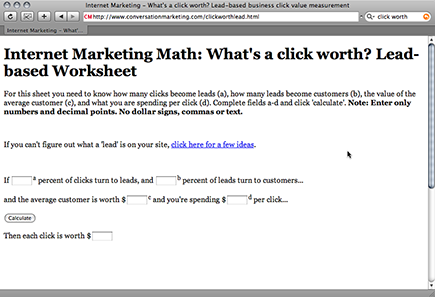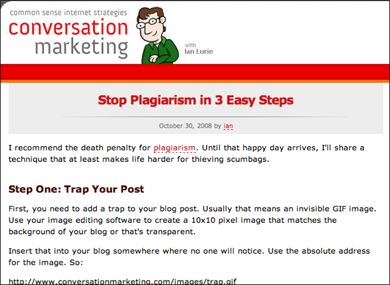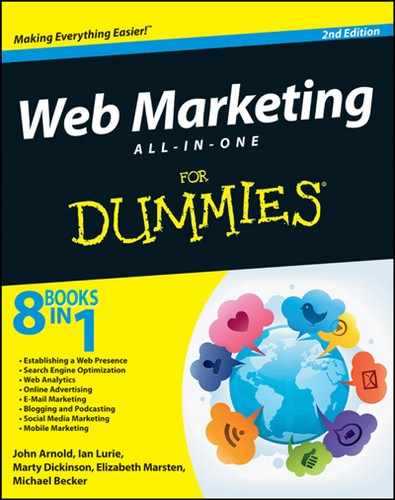Chapter 6: Creating a Winning Social Media Campaign
In This Chapter
![]() Marketing by providing tools
Marketing by providing tools
![]() Marketing by providing content
Marketing by providing content
![]() Marketing by providing entertainment
Marketing by providing entertainment
![]() Leveraging your network
Leveraging your network
![]() Addressing harm to your reputation
Addressing harm to your reputation
Social media marketing is more than making friends and expanding your network. At some point, you need to get your message out.
The balance between marketing and not alienating the community can be tricky. Social network participants don’t like it when one of their supposed friends suddenly starts hawking items for sale or charging for answers to questions.
• Provide compelling tools, content, and entertainment that entice others to spread the word
• Use your existing network to help kick-start your efforts
• Correct false rumors or statements about your company, without getting defensive
And that’s what this chapter covers.
The Importance of Creating a Winning Social Media Campaign
Compare these two scenarios. Think about what kind of web marketer you want to be — and which results you want.
Scenario 1
You’re walking down the street. Someone wearing a sandwich board steps in front of you and shoves a flyer in your face, advertising a new a cappella singing group that’s just released a CD.
There you were, walking along and minding your own business, and now this stranger is trying to pressure you into buying a CD or going to a performance. You were just walking down the street, enjoying a nice day. So, how do you feel? Intruded upon, probably.
Scenario 2
You’re walking down the same street, enjoying the weather. A small knot of people ahead catches your interest. You walk up. In the middle of the crowd, you see three performers singing a cappella. They’re brilliant. You listen, and more people show up because of the growing crowd. The group has its CD on display, right there. Even though you don’t buy a copy, you walk away smiling, and you might even mention the group to your friends later that day.
Scenario 1 is, in many ways, traditional interruption-based marketing, which works to a point but generally alienates those who aren’t really in buying mode. Even worse, this type of marketing especially alienates folks who feel they’re part of a community that doesn’t include any agreement to buy.
Scenario 2 is the classic social media–marketing technique. The a cappella trio gave a free performance. Passersby could stop and listen or ignore them. Those who enjoyed the music stuck around, which caught the attention of others. The crowd that grew enjoyed the music without obligation. Some of the crowd certainly bought the CD. And others told their friends about the group. That’s social media marketing at its best.
Marketing by Providing Tools
Social media is the perfect place to help your company by helping others. Say that a bicycle shop is located in your community called Harrison’s Bikes. In the summer, the bike shop does a brisk business selling bikes and helmets, and doing repairs. As fall approaches, though, business slows. People are still riding their bikes, but they don’t think the bike shop has anything to offer them when they get ready for the long, cold winter.
Harrison could stand out on the street, stapling flyers to telephone poles. He could also buy an ad in the local newspaper advertising a sale on rain fenders (with free installation, even!).
Instead, Harrison starts riding with a few of the local bicycle clubs. He puts his best rain fender on his bike. He doesn’t blurt out, “Hey! Look at my cool rain fender!” But other riders see the fender, which really is pretty cool looking. They ask him about it. They already know who he is and that he owns a bike shop. He explains that this new fender is for serious riders (like them) who don’t want to look ridiculous but still want to commute to work and end up not splattered with mud. He lets them know he’s installing them for free this week.
The next day, a few riders show up at Harrison’s shop. They buy the new fenders and let him install them. While they’re there, they notice some good rain gear and buy that, too. (Cyclists are like that.) More importantly, when they ride into work that Monday, their cycling coworkers ask about the fender. Harrison’s new customers spread the word.
This is a perfect example of marketing by providing tools. Although providing free tools sometimes helps, you can do just fine by providing solutions and tools that cost money, if you make the offer compelling enough.
What’s important here is that Harrison didn’t push his product. He simply went into the community and used the product.
A successful tools-based campaign should
• Offer a tool that’s simple to use: The whole community should be able to understand the value and use it. That’s why Harrison installed the fenders for his customers.
• Have very few barriers to entry: Having few barriers might mean that the tool is free or that it’s immediately available. Just don’t make the community work for it. Again, Harrison installed the fenders for customers. That eliminated any excuse for not participating.
• Be contagious: If you haven’t been there already, skip to Chapter 1 of this minibook to read about the sneeze principle. Something about the tool must be spread (disseminated) easily. In Harrison’s case, every customer who bought the fenders became an advertisement. Other cyclists saw them, and when asked, the new fender owner told them to go to Harrison’s shop.
• Be honest and straightforward: Any tools that appear to have an ulterior motive — such as harvesting e-mails for an unrelated campaign or getting people’s contact information when it’s not necessary — will fail.
Figure 6-1: A click-worth calculator.

Notice a few things about this tool:
• It’s very simple. Plug in a few numbers, and you’re all set.
• It has no barriers to entry. The user doesn’t have to log in, provide any information, or do anything else to use this tool.
• It’s contagious (in a good way). It’s easy to forward a link to this page, and it offers a tool (albeit simple) that’s something every online marketer needs.
• It’s straightforward. No tricks here. Plug in your data and get the result. Come back as often as you want.
Don’t have any tools in mind? If not, that’s okay. You can do the same thing with content. Keep reading.
Social Media Marketing with Content
The a cappella singers described at the beginning of the chapter didn’t offer any tools, per se. Instead, they put their content in front of the audience. You can do the same thing: Create informative or entertaining content, put it in front of a community, and then let those folks spread the word.
If you haven’t read about Harrison and his bike shop, hop back to the preceding section and then come back here. The fender-installation campaign (via a tool) was successful, but a lot of cyclists simply pack up their bicycles for the winter. They don’t need fenders. Their primary concern is staying in shape during the winter.
So, Harrison creates a small booklet, entitled “Summer Fitness, Winter Months,” that tells cyclists how they can stay in shape during the winter by doing a few simple exercises and also by buying a stationary trainer. (The stationary trainer turns a regular bicycle into a stationary bike so that you can ride your bike indoors.)
He sets a small stack of the booklets next to the cash register in his store. He also attends the monthly meetings of a few local bicycle clubs and does a few free lunch-hour classes at his shop. Harrison tells the community members how they can stay in shape during the winter, points out the equipment they need, and explains why this is a good alternative to the gym for those who don’t like lifting weights.
As a result, he sells stationary trainers. He also gets a reputation among local cyclists as someone who genuinely knows them and helps out.
All this was done without creating a tool. All Harrison did was deliver some useful content.
The hallmarks of a successful content campaign
Not all content is made for social media. In the preceding example of Harrison and his booklet, Harrison stuck to some basic principles:
• Don’t sell! Your content shouldn’t be an overt advertisement for one product or your services. Inform and teach, but don’t advertise. Harrison demonstrated relevant equipment, but he never told folks where or how to buy.
• Be relevant. Focus on your audience’s immediate needs. Harrison focused on indoor training because winter is coming. In May, this training won’t help.
• Be available. Your content has to be easy to find and access. Harrison went to other people’s places of work and bicycle clubs. He offered training at his shop during lunch.
• Don’t try tricks. Don’t try to get information that’s not required. It’s tempting to collect e-mail addresses, but that’s not your mission here.
A bike shop is great, you say, but we’re talking about the Internet. Fair enough. Here’s a real-world online example. This blog post, shown in Figure 6-2, is about a sneaky way to trap plagiarists.
Figure 6-2: A blog about setting a trap to nab plagiarists.

Word of this post spread. A few people added it to Digg, and within a few hours, more than 2,000 people had “Dugg” the article. (See Chapter 2 of this minibook for more about Digg.) Traffic, shown in Figure 6-3, spiked: 60,000 visitors in one day, with a healthy 30 percent more subscribers and daily visitors.
Figure 6-3: Whoa! That’s a lot of traffic.

This post stuck to the rules:
• No sales pitch was given. It was, in fact, 100 percent pure rant.
• It was very relevant. Any blogger, writer, or other content producer hates plagiarism. It’s enormously frustrating. So any example of someone putting one over on the thieves is going to be popular.
• The article was easily available. It’s just a blog post — no login or purchase required.
• It didn’t contain any tricks. Readers could go straight to the content without any hurdles, such as e-mail sign-ups.
Providing entertainment with a content campaign
Including some entertainment in your content has value. Whether you’re using written text, video, or photos, your chances of producing truly sneezable content are far higher when you can teach and entertain at the same time.
Sometimes, the entertainment value is built in: Inserting ridiculous photos into the websites of unwitting thieves is funny. Sometimes you’ll want to add entertainment value to subjects that aren’t overtly fun or funny.
Leveraging Networks to Create a Winning Social Media Campaign
You can produce the coolest tool or the best content on the planet. If no one knows about it, though, it won’t help.
Now is the time to use the social media network that you’ve built. After you post your article or tool, send a quick note to your Twitter followers, your Facebook friends, and your other audiences in the social media world. Don’t push it: Just a single note will do.
Try to write a note that will catch attention. This probably won’t help:
New blog post about plagiarism.
This approach is better because it catches folks’ attention:
I wreak horrific vengeance upon plagiarists. Mwahahahahaha!
Addressing Harm to Your Reputation
Sometimes, folks will misinterpret what you write, disagree with you, or resort to plain ol’ name calling. That’s the nature of any community.
If readers misinterpret what you write, don’t snap at them. Reply to them via whatever network they’re using and explain what you meant. Even better, thank them for pointing out something that wasn’t clear about your content or tool and then explain how you fixed it.
If readers disagree, just grin and bear it. If you want everyone to agree with you, don’t publish anything online. Disagreements are in the nature of any community. Tastes and opinions vary. Don’t take it personally, and again, don’t snap at anyone.
Finally, if someone just starts calling you names (it does happen), don’t take the bait. Sure signs that you shouldn’t bother replying are when folks call you an idiot or a cretin, or say that you’re clueless. Ignore such taunts, respond with humor, or let your community handle it for you.
In all these cases, responding in anger or pointing out that the dissident is dumb, wrong, or silly will only pour gas on the fire. That’s the most important lesson in managing your reputation: Respond only when you can do so in a positive manner.
Applying These Lessons Everywhere
Compelling social media–marketing campaigns succeed because you show a genuine interest in helping the community. Help might mean providing a tool, valuable information, or a laugh. Help does not mean a sales pitch.
It also requires patience and a little faith in your community. You have to trust that they have the judgment to know what’s legitimate and good and what’s not.
And, it requires persistence. If you’re lucky, one in ten of your social media–marketing campaigns will succeed when you start.
All these lessons hold true in all Internet marketing. Deliver value, be patient, trust your community, and be persistent. Success is nearly inevitable if you do.



